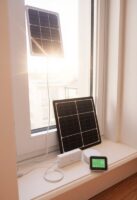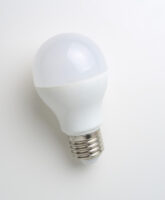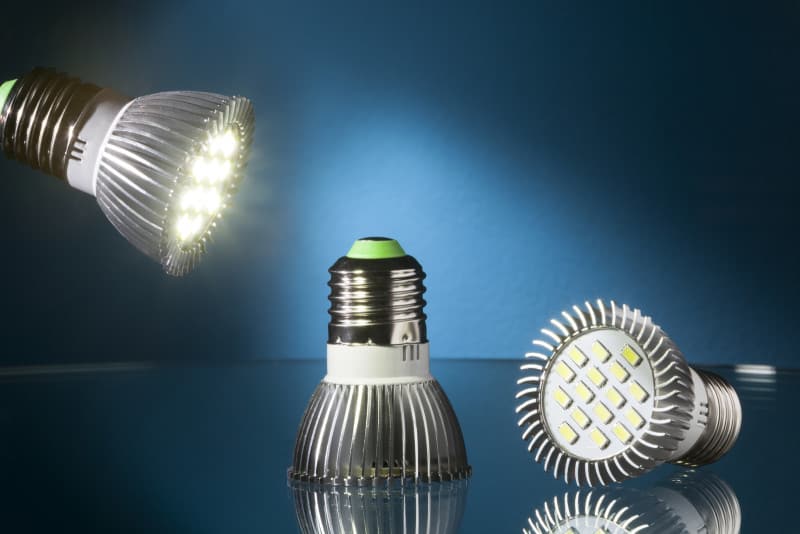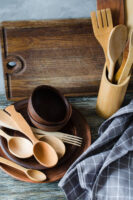Traditional light bulbs: an environmental threat we can no longer ignore.
They waste energy, contribute to greenhouse gas emissions, and contain toxic materials.
Switching to environmentally friendly options like LED or CFL bulbs is not only a sustainable choice but also brings cost savings and improved lighting quality.
Let’s take a closer look at the impact of traditional bulbs, the benefits of eco-friendly alternatives, and why it’s time to make the switch.
Let’s illuminate a greener future.
The Environmental Impact of Traditional Light Bulbs
Traditional light bulbs have been the go-to choice for many years, but they come with a significant environmental impact.
These bulbs use a lot of energy and contribute to greenhouse gas emissions.
They also contain hazardous materials that can pollute the environment if not disposed of properly.
One of the main concerns associated with traditional light bulbs is their energy consumption.
Incandescent bulbs are particularly notorious for being inefficient, as they waste up to 90% of their energy in heat rather than producing light.
This inefficiency means more electricity must be generated, resulting in higher greenhouse gas emissions.
Another concern is the presence of toxic substances such as mercury and lead in traditional bulbs.
If these materials end up in landfills or waterways, they can harm wildlife and contaminate soil and water sources.
Why are traditional light bulbs harmful to the environment?
Traditional light bulbs are harmful to the environment for a number of reasons.
First and foremost, they consume a lot of energy, which means that they contribute significantly to greenhouse gas emissions.
This is because most traditional light bulbs use incandescent technology, which generates heat as well as light.
As a result, only about 10% of the electricity used by an incandescent bulb actually produces visible light – the rest is wasted.
In addition to their high energy consumption, traditional light bulbs also contain toxic materials such as mercury and lead.
These can leach into the environment when old bulbs are thrown away or improperly disposed of in landfills.
Since these materials pose a health risk if ingested or inhaled, disposing of them responsibly can be both challenging and costly.
It’s clear that traditional light bulbs are simply not sustainable from an environmental perspective.
If we want to reduce our carbon footprint and protect our planet for future generations, we need to switch to more environmentally friendly lighting options like LEDs or CFLs (compact fluorescent lamps).
What are the key environmental concerns associated with traditional light bulbs?
Traditional light bulbs, such as incandescent and halogen bulbs, are notorious for their negative impact on the environment.
One of the main concerns is their high energy consumption.
These bulbs use a significant amount of electricity to produce light, which contributes to greenhouse gas emissions and climate change.
In addition to high energy consumption, traditional light bulbs also have a short lifespan compared to environmentally friendly options.
They may need to be replaced more frequently, leading to increased waste and environmental harm.
How do traditional light bulbs contribute to energy consumption and greenhouse gas emissions?
Traditional light bulbs consume a significant amount of energy and contribute to greenhouse gas emissions.
The primary reason for their inefficiency is that they rely on heating a filament inside the bulb to produce light, which requires a lot of energy.
As a result, traditional light bulbs have been phased out in many parts of the world due to their negative impact on the environment.
In addition to consuming more energy than necessary, traditional light bulbs also contribute significantly to greenhouse gas emissions.
This is because most electricity in the world is still generated using fossil fuels such as coal and oil.
When these fuels are burned to produce electricity, they release large amounts of carbon dioxide and other harmful pollutants into the atmosphere.
By switching to environmentally friendly alternatives such as LED or CFL (compact fluorescent) bulbs, we can significantly reduce our energy consumption and environmental impact.
What are the implications of improper disposal of traditional light bulbs?
Improper disposal of traditional light bulbs can have serious environmental implications.
Most traditional light bulbs contain harmful chemicals such as mercury, which can leach into the environment and harm wildlife and ecosystems.
It is essential to properly dispose of old or broken light bulbs to prevent these chemicals from entering landfills or bodies of water.
Recycling programs for traditional light bulbs may vary depending on your location, so it’s important to research local options or contact a waste management company for guidance.
In contrast, environmentally friendly light bulbs are designed to minimize their impact on the environment during use and disposal.
Some types of eco-friendly light bulbs, like LED lights, do not contain hazardous materials and can be recycled easily.
By choosing sustainable lighting options like energy-efficient or low-energy light bulbs, you can reduce your carbon footprint and help protect the planet.
Exploring the Advantages of Environmentally Friendly Light Bulbs
Environmentally friendly light bulbs, also known as eco-friendly or energy-efficient light bulbs, offer a range of benefits over traditional incandescent bulbs.
One of the most significant advantages is their ability to consume less energy while providing comparable levels of brightness.
By using eco-friendly lighting solutions, you can reduce your energy consumption and carbon footprint while enjoying high-quality lighting.
In addition to being environmentally conscious, you’ll also save money on your electricity bill in the long run.
While LED and CFL bulbs may initially cost more than incandescent bulbs, they last longer and use significantly less energy which makes them a smart investment in both economical aspects as well as environmental impact.
What are environmentally friendly light bulbs?
Environmentally friendly light bulbs, also known as eco-friendly or energy-efficient light bulbs, are designed to reduce the negative impact traditional light bulbs have on the environment.
These sustainable lighting options use significantly less energy and can last much longer than traditional incandescent bulbs.
The benefits of environmentally conscious lighting are numerous.
For one, they help reduce energy consumption and greenhouse gas emissions. They also provide cost savings over time due to their longer lifespan and lower energy usage.
There are several types of eco-friendly light bulbs available in the market today, including compact fluorescent lamps (CFLs), light-emitting diodes (LEDs), and halogen incandescents.
Each type of bulb has its own set of benefits and limitations depending on your specific lighting needs.
When choosing an environmentally friendly light bulb, there are several factors to consider.
These include evaluating the energy efficiency ratings such as lumens, watts, efficacy; considering lifespan and durability for long-term environmental benefits; looking at color temperature and lighting quality; exploring dimmable or specialty options for specific lighting needs; and properly disposing of used eco-friendly bulbs by taking them to recycling centers.
What are the main advantages of using environmentally friendly light bulbs?
Environmentally friendly light bulbs, such as CFLs and LEDs, have a number of advantages over traditional incandescent bulbs. Here are some of the main benefits:
- Energy efficiency: Environmentally friendly light bulbs use significantly less energy than traditional incandescent bulbs. This means lower electricity bills and reduced greenhouse gas emissions.
- Longer lifespan: Environmentally friendly light bulbs typically last much longer than traditional incandescent bulbs. This means fewer replacements and less waste.
- Cost-effective: Although environmentally friendly light bulbs may have a higher upfront cost than traditional incandescent bulbs, they ultimately save you money in the long run due to their energy efficiency and longer lifespan.
- Wide variety of options: There are many types of environmentally friendly light bulbs available that can be used in different settings and for different purposes.
- Improved lighting quality: Many environmentally friendly light bulb options provide better lighting quality compared to traditional incandescent bulbs.
It’s important to note that proper disposal of eco-friendly lightbulbs is also important to prevent any possible environmental hazards.
Some recycling centers or hardware stores offer programs for recycling these types of lights.
How do environmentally friendly light bulbs help reduce energy consumption and greenhouse gas emissions?
Environmentally friendly light bulbs, also known as eco-friendly or energy-efficient light bulbs, are designed to reduce energy consumption and greenhouse gas emissions.
Compared to traditional incandescent bulbs, eco-friendly light bulbs use significantly less energy since they require less wattage to produce the same amount of brightness.
This translates into lower electricity bills and reduced carbon footprint.
LEDs (Light Emitting Diodes) are one of the most popular environmentally friendly light bulb options available today due to their incredible efficiency and long lifespan.
They consume up to 80% less electricity than incandescent bulbs while lasting for up to 25 times longer.
CFLs (Compact Fluorescent Lamps), on the other hand, consume about 75% less energy than traditional bulbs without sacrificing brightness.
Another way that eco-friendly light bulbs help reduce greenhouse gas emissions is through their extended lifespan.
Since you don’t have to replace them as often as traditional bulbs, you’ll be throwing away fewer used-up ones which end up in landfills. Furthermore, many types of environmentally conscious lighting can be recycled properly when it’s time for them to be disposed of.
Switching over from traditional lights can take a chunk out of your monthly electric bill while helping save the environment at large!
Types of Environmentally Friendly Light Bulbs
There are several types of environmentally friendly light bulbs available on the market today, each with its own set of benefits and limitations.
Here’s a brief overview of the most popular options:
- Compact fluorescent lamps (CFLs): These bulbs use up to 75% less energy than traditional incandescent bulbs and last up to 10 times longer. They do contain small amounts of mercury, so proper disposal is important.
- Light-emitting diodes (LEDs): LEDs use up to 90% less energy than traditional incandescent bulbs and last up to 25 times longer. They are also more durable and don’t contain hazardous materials.
- Halogen incandescents: These are similar to traditional incandescent bulbs but are slightly more energy-efficient due to a halogen gas filling in the bulb. However, they still consume more energy compared to CFLs or LEDs.
- Energy-saving incandescents: These are similar in appearance to traditional incandescent bulbs but use around 25%-30% less energy.
Incandescent vs. compact fluorescent lamps (CFLs) vs. light-emitting diodes (LEDs)
When it comes to environmentally friendly light bulbs, there are a few different options available on the market.
The three most common types of energy-efficient light bulbs are incandescent, compact fluorescent lamps (CFLs), and light-emitting diodes (LEDs).
Incandescent bulbs have been in use for over a century, but they are not very energy efficient and have a short lifespan.
According to the U.S. Department of Energy, only about 10% of their energy is converted into visible light while the rest is lost as heat.
CFLs were introduced as an alternative to incandescent bulbs because they use less energy and last longer.
They contain small amounts of mercury which can be harmful if the bulb breaks or is improperly disposed of.
LEDs are even more efficient than CFLs and have a much longer lifespan. They also do not contain any toxic materials like mercury.
What are the benefits and limitations of CFLs and LEDs?
Both CFLs and LEDs offer significant advantages over traditional incandescent bulbs in terms of energy efficiency, cost savings, and environmental impact.
CFLs use up to 75% less electricity than incandescent bulbs and last up to 10 times longer.
They also emit less heat, making them safer to use in enclosed spaces. However, CFLs do contain mercury which can be harmful if not disposed of properly.
It is important to recycle used CFLs at designated recycling centers or through hazardous waste collections.
LEDs are even more energy-efficient than CFLs, using up to 80% less electricity and lasting up to 25 times longer than incandescent bulbs.
They also contain no hazardous materials like mercury.
While LEDs may have a higher upfront cost compared to other types of light bulbs, their long lifespan ultimately results in significant cost savings over time.
One limitation of both CFLs and LEDs is that they may not be compatible with all types of lighting fixtures or dimmer switches.
You’ll need to check the compatibility before purchasing these environmentally friendly options for specific lighting needs.
Which types of environmentally friendly light bulbs are best suited for different applications?
There are several types of environmentally friendly light bulbs available in the market, each with its own set of advantages and limitations.
Here’s a breakdown of some popular options and which applications they’re best suited for:
- LED (light-emitting diode) bulbs: These are highly energy-efficient and can last up to 25 times longer than traditional incandescent bulbs. They’re suitable for general lighting purposes such as lamps, overhead lights, and outdoor lighting.
- CFL (compact fluorescent lamp) bulbs: These use 75% less energy than incandescent bulbs and can last up to 10 times longer. While they take some time to warm up and reach full brightness, they’re better suited for areas where lights are frequently turned on/off.
- Halogen bulbs: These use less energy than traditional incandescent bulbs but are not as efficient as LED or CFL bulbs. They’re best suited for decorative purposes like chandeliers or accent lighting.
- Smart light bulbs: These can be controlled remotely using a smartphone app or voice commands through smart assistants like Alexa or Google Home. They offer convenience along with energy efficiency and are suitable for all kinds of applications.
Remember that disposing of eco-friendly light bulbs also requires special care since they contain hazardous materials like mercury vapor or lead soldering alloys in electronic parts.
Factors to Consider When Choosing Environmentally Friendly Light Bulbs
When it comes to choosing environmentally friendly light bulbs, there are several factors that you should consider.
Here are some of the most important things to keep in mind:
- Energy efficiency ratings: Look for bulbs with high lumens (brightness) and low watts (energy consumption). The efficacy rating, which measures the amount of light produced per watt of energy consumed, can also be helpful in determining a bulb’s energy efficiency.
- Lifespan and durability: Consider how long each bulb will last and whether it is durable enough to withstand regular use. Longer-lasting bulbs will not only save you money on replacements but also reduce waste.
- Color temperature and lighting quality: Choose a color temperature that suits your needs – warm whites for cozy spaces or cool whites for task-oriented areas. Also, pay attention to the lighting quality as poor-quality lights can cause eye strain and headaches.
- Dimmable options: If you like being able to adjust the brightness level in your room, look for dimmable versions of eco-friendly bulbs.
- Specialty options: For specific applications like outdoor security lighting or bathroom vanity lights, there are specialty eco-friendly bulbs available.
By considering these factors when choosing eco-friendly light bulbs, you’ll be able to find the best option for your needs while reducing your environmental impact.
Understanding energy efficiency ratings (lumens, watts, and efficacy)
When it comes to environmentally friendly light bulbs, one of the most important things to consider is their energy efficiency. This is where lumens, watts, and efficacy come into play.
Lumens are a measure of brightness or the amount of light emitted by a bulb.
The higher the lumen rating, the brighter the bulb will be. Watts, on the other hand, are a measure of power consumption or how much electricity is needed to produce that amount of light.
A lower wattage generally means less energy consumed and fewer greenhouse gas emissions.
Efficacy is a measurement of how efficiently a bulb converts electrical energy into light output.
The higher the efficacy rating, the more efficient that particular bulb will be in terms of producing bright light while consuming fewer watts.
When shopping for environmentally friendly bulbs, look for those with high lumens per watt (LPW) ratings since they indicate greater efficiency and less energy consumption over time.
Some eco-friendly bulbs have labels like ENERGY STAR® that provide information about their environmental benefits and help you make an informed choice.
When choosing environmentally friendly lighting solutions take note or research these key factors such as lumens/watts/efficacy ratings as well as color temperature and lighting quality to ensure you’re getting both an eco-friendly option but also one which meets your personal needs regarding atmosphere/atmospheric effects created by various types of lighting.
Evaluating lifespan and durability for long-term environmental benefits
One important factor to consider when choosing environmentally friendly light bulbs is their lifespan and durability.
While these types of bulbs may have a higher upfront cost than traditional incandescent bulbs, they can actually save you money in the long run by lasting longer and requiring less frequent replacements.
LEDs, for example, have an average lifespan of up to 25,000 hours compared to just 1,200 hours for incandescent bulbs.
This means that you will need to replace an LED bulb far less frequently than a traditional bulb, reducing the amount of waste produced.
In addition to longevity, it’s also important to consider the durability of your eco-friendly light bulbs.
Look for options that are shatterproof or resistant to damage from vibration or shock.
This can help prevent breakage during transportation or installation and ensure that your bulbs last as long as possible.
By choosing environmentally conscious lighting solutions with longer lifespans and greater durability, you can reduce your environmental impact while saving money over time.
Considering color temperature and lighting quality
When choosing environmentally friendly light bulbs, color temperature and lighting quality should be taken into account.
Color temperature is measured in Kelvins (K) and refers to the warmth or coolness of the light emitted by a bulb.
Low Kelvin ratings result in warm yellow tones, while high Kelvin ratings produce cooler blue-white tones.
For a cozy and inviting feel, choose bulbs with lower Kelvin ratings for areas like bedrooms and living rooms.
For tasks that require precision, such as reading or working at a desk, select bulbs with higher Kelvin ratings.
Lighting quality is another important factor to consider when selecting eco-friendly lighting solutions.
Look for bulbs with high Colour Rendering Index (CRI) scores, which indicate how accurately colors are represented under the bulb’s light compared to natural sunlight.
By considering both color temperature and lighting quality when choosing environmentally friendly light bulbs, you can create an energy-efficient yet comfortable environment in your home or office space.
Exploring dimmable and specialty options for specific lighting needs
Environmentally friendly light bulbs come in a variety of options, including dimmable and specialty bulbs.
Dimmable bulbs are useful for creating ambiance and saving energy by adjusting the brightness level according to your needs.
These types of eco-friendly bulbs work with most standard dimmer switches, but it’s important to check the packaging or consult with a professional before making a purchase.
Specialty environmentally friendly light bulbs include those designed for specific lighting needs, such as outdoor floodlights or decorative candelabra bulbs.
LED technology has opened up more options for environmentally conscious lighting solutions, including color-changing and smart lightbulbs that can be controlled through an app or voice command.
When choosing environmentally friendly light bulbs, consider factors like energy efficiency ratings (lumens, watts, and efficacy), lifespan/durability for long-term environmental benefits, color temperature/lighting quality preferences, and any specific lighting needs you may have.
By taking the time to evaluate your options and choose eco-friendly lighting solutions that meet your unique requirements, you can make a positive impact on both the environment and your wallet over time.
Conclusion
Environmentally friendly light bulbs, such as LED and CFL options, offer significant advantages over traditional incandescent bulbs.
They consume less energy, have a longer lifespan, and provide cost savings in the long run.
They contribute to reducing greenhouse gas emissions and offer improved lighting quality.
By making the switch to eco-friendly light bulbs, you can not only reduce your carbon footprint but also enjoy the benefits of energy efficiency and sustainability.
Make the environmentally responsible choice and invest in lighting solutions that are good for both the planet and your wallet.







